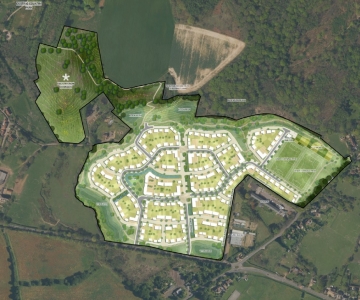For those looking to take their first steps on the housing ladder, it can be a daunting process.
Lack of housing stock, affordability, mortgage rates and deposits and the cost of living crisis can make homeownership seem like an unobtainable dream.
So, what is a Local Plan and how does it affect housing?
A Local Plan is a document created by local government planning authorities to guide the future development and land use within a specific geographical area, typically a district or region.
These plans are an essential part of urban and rural planning and play a significant role in shaping the physical and social environment of an area.
They are an important part of ensuring an area provides enough new homes to meet its needs both now and in the future for residents.
Local Plan Delays
Recent research by Turley in conjunction with The Land, Planning and Development Federation (LPDF) who have been working with the Home Builders Federation (HBF), to track Local Plans, estimate that 61 have paused work on their plans.
Often stating the cause is due to the uncertainty caused by the Government’s proposed planning reforms, which are yet to be formalised. This is despite the publication of the revised National Planning Policy Framework (NPPF) in December 2023.
This equals exactly one fifth of all Local Authorities in England, with three quarters of those delaying being in the south, including London, with approximately 37% of authorities having a Local Plan on hold.
As a collective these delaying authorities had a population increase of 7.2% over the prior decade, meaning roughly a tenth faster growth than the 6.6% whole of England average.
 Reduced Housing Supply
Reduced Housing Supply
If Local Authorities continue to delay work on their Local Plans, they will as a by-product fail to replenish their supply of housing sites and ultimately slow down the delivery of new housing of all types from homes for first time buyers to bungalows for downsizers.
As of 2021, these Local Authorities with delayed Local Plans were also home to nearly 172,000 households living in overcrowded conditions, with at least one fewer bedroom than they required based on the bedroom standard.
Fewer homes being delivered means less choice for buyers and people who are looking to get on the housing area having to relocate due to lack of housing stock on the market to purchase.
Affordability
The affordability impact of such delays is likely to only grow the longer Local Plans are delayed. The Turley research has shown the average cost of purchasing a home in any of the affected areas has recently been rising by an average of £515 per month.
These areas generally had high house values to begin with, with 80% of the delaying Local Authorities having a greater imbalance between median house prices and earnings than the country as a whole last year.
Employment Opportunities
Housebuilding creates jobs not only within the construction sector but also in related industries like manufacturing, transportation, and retail.
Building new homes and developing residential areas generates significant economic activity. It leads to the purchase of construction materials, appliances, furniture, and other goods and services. This spending has a multiplier effect, as money circulates through the economy, creating more jobs and income.
A well-functioning housing market contributes to long-term economic stability by providing a stable and secure place for individuals and families to live.
A thriving housing market is often seen as a sign of a healthy and growing economy.
Take An Interest And Get Involved
The creation of a Local Plan involves public consultation and engagement by the Local Authority.
Being informed and participating in these processes allows you to have a say in how your community and new housing develops.
Research by Shelter has found people who are opposed to local housing are three times more likely to actively oppose than supporters are to actively support new homes (21% compared to 7%). This means many voices are not being heard by the planning system.
Often the loudest voice and those most actively involved in community engagement are those against development, believing it will have a negative impact on the area.

‘The silent majority’, including young workers, families and people with disabilities, often find it difficult to attend and engage in public consultation for new homes.
Yet often they have the most to gain from new housing, employment and other benefits created by development.
Make sure you get involved both in your Local Plan and in proposals by land promoters and developers for new homes in your area. That way you can make fully informed decisions about housing and your community needs.
You can then also track potential new homes in your area through your local council online planning portal, so you can be in the know once you are ready to make a purchase.
The Future of Housing
The current appetite for delaying Local Plans is unsustainable, leaving some of the country’s fastest growing areas in a state of limbo.
What will happen next is uncertain, but housebuilding needs to be high on the Government’s agenda when looking at the current economic state.
Could your land have the potential to help contribute towards housing delivery?
It is never too early to start thinking about whether your land has development potential and putting together a land promotion strategy for your land.
Katie Yates, Marketing & Communications Director
01788 726810 / katiey@catesbyestates.co.uk




